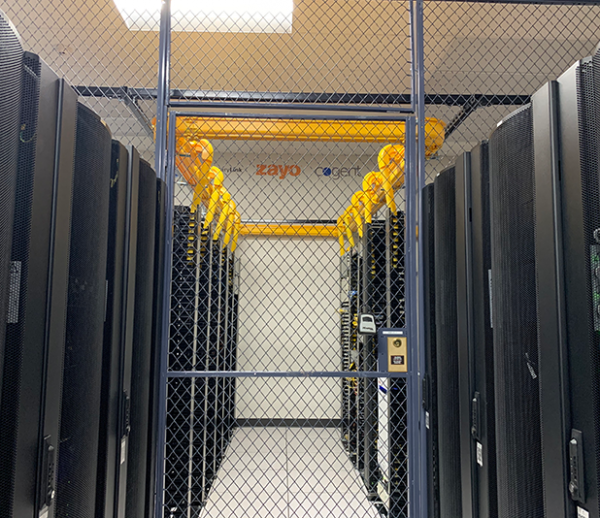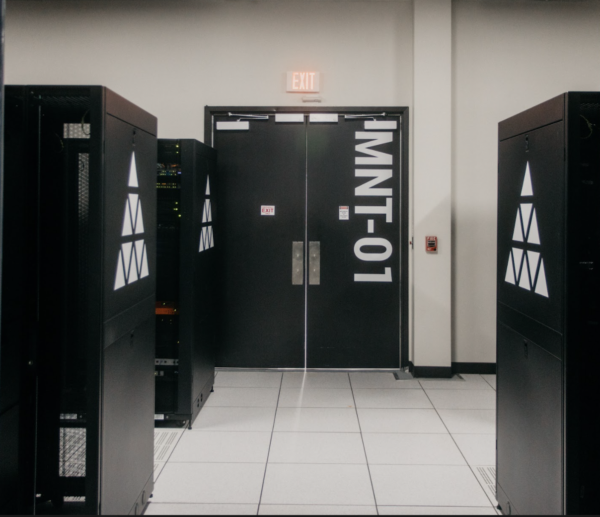In an era where businesses depend heavily on reliable, high-speed internet access and uninterrupted availability of cloud services, ensuring consistent network performance is essential.
Cloud Direct Connect is one of the strongest ways to achieve this performance. This dedicated network connection bypasses the public internet and delivers more control, security, and flexibility.
While many know about virtual private networks (VPNs) for linking on-premises infrastructure to cloud environments, Cloud Direct Connect takes things further. It’s an offering (made popular by providers like AWS, Azure, and Google Cloud) that creates a private link between your data center or on-premises network and the cloud provider’s infrastructure.
Below, we’ll explore Cloud Direct Connects, how it works, its benefits, common use cases, and important considerations for businesses looking to adopt it.
What is Cloud Direct Connect?
Cloud Direct Connect is a specialized network service at its core (often referred to by specific provider names such as AWS Direct Connect, Azure ExpressRoute, or Google Cloud Interconnect).
Instead of routing traffic through the public internet, this service allows organizations to create a dedicated, private connection directly linking their physical or virtual data centers to a cloud provider’s network.
The technical details vary slightly across cloud providers. Still, the underlying premise is the same: a dedicated network link that offers lower latency, better performance consistency, and enhanced security when transferring large volumes of data.
How Cloud Direct Connect Works
While the intricate workings can vary, a typical scenario follows these general steps:
Physical Infrastructure Setup
You begin by selecting a co-location facility or a point of presence (PoP) where both your chosen cloud provider and your data center have a network presence.
Often, providers have a network of partner exchange locations where you can lease space and bandwidth.
Establishing a Circuit
You (or a connectivity partner) provision a dedicated circuit that links your infrastructure to the provider’s backbone.
This might involve running fiber connections or leveraging a network service provider with interconnect agreements with the cloud provider.
Configuration on Cloud Console
You create a “Direct Connect” or “ExpressRoute” connection in your cloud provider’s management console (e.g., AWS Management Console or Azure Portal).
You specify parameters such as Virtual Local Area Network (VLAN) tags, autonomous system numbers (ASN), and routing protocols (BGP is the most common).
Routing and Testing
After configuration, you exchange routing information with the cloud provider (through BGP). Once routes are established and tested, your on-premises network is securely extended into the cloud.
Effectively, you’re building a logical private link where your data bypasses public routers, drastically reducing latency and making performance more predictable.
Benefits of Cloud Direct Connect
Before discussing the technical details, let’s explore the significant advantages of a private, dedicated link to your cloud environment.
Consistent Network Performance
Direct Connect significantly reduces variability in data transfer speeds. This is crucial for applications like real-time analytics, voice/video streaming, high-frequency trading, and mission-critical SaaS solutions where even minor latency spikes can have wide-ranging effects.
Enhanced Security
Although encryption is recommended, Cloud Direct Connect’s most significant security advantage is that traffic does not go through the public internet, reducing the potential exposure to attacks.
Cost-Effectiveness
While establishing dedicated upfront connection costs, organizations that routinely move large amounts of data to and from the cloud often find it more economical than the high egress fees associated with public internet-based transfers.
Also, many providers offer reduced data transfer rates for traffic sent over these dedicated links.
Scalability
As your business grows, increasing the bandwidth on your dedicated connection is simpler than reconfiguring multiple VPN tunnels or dealing with complex ISP-based solutions.
Greater Control
With a dedicated connection, network administrators have fine-grained control over traffic routing, quality of service (QoS), and bandwidth allocations, something that’s harder to achieve over the public internet.
Common Use Cases of Cloud Direct Connect
From media streaming to financial services, Cloud Direct Connect addresses specialized needs. Let’s examine a few typical scenarios in which this solution shines.
Data-Intensive Workloads
A direct connection is often a no-brainer for organizations frequently shuttling massive datasets between the cloud and on-premises (e.g., data analytics, big data processing).
Backup and Disaster Recovery
Timely backups, replication, and disaster recovery strategies require reliable, high-throughput network links to ensure swift response when every second counts.
A private connection can streamline data transfer and significantly reduce downtime, allowing organizations to recover critical applications and services faster during an outage or catastrophe.
Hybrid Environments
Businesses adopting a hybrid strategy (some workloads in the cloud, some on-premises) rely on seamless integration. Direct Connect helps keep these environments well-integrated, reducing high latency or congestion issues.
Media Streaming or Real-Time Communication
Low latency and minimal jitter are vital for video streaming, live events, or unified communication platforms (VoIP). Dedicated lines ensure more consistent streaming quality.
Financial Services and High-Frequency Trading
When milliseconds can mean huge financial gains or losses, any reduction in latency becomes invaluable. A direct link helps create a stable environment for such specialized needs.
Considerations Before Adopting Cloud Direct Connect
While the perks are substantial, reviewing a few critical factors, such as cost, provider availability, and redundancy, before committing to a direct connection is essential.
Cost and Budget
Direct Connect can be more expensive than traditional internet-based VPN solutions, especially for smaller organizations.
You’ll need to account for monthly circuit charges, potential co-location fees, and the cost of cross-connects in data centers.
Provider Availability
Not all cloud providers have the same coverage in every region. Ensure you have a nearby co-location facility or a network partner to help you establish a reliable link.
Redundancy and Failover
If not properly planned, one dedicated connection might still be a single point of failure. Consider provisioning multiple connections from different PoPs or carriers to ensure continued uptime.
Ongoing Management
Setting up a direct link is not a set-it-and-forget-it activity. You’ll need to monitor traffic, handle capacity planning, watch for router firmware upgrades, and ensure your routing is optimized.
Security Layers
Even though the connection is private, depending on your compliance requirements, you should still consider encryption for data at rest and in motion. Implementing IAM (Identity and Access Management) and zero-trust security principles is critical.
How to Get Started With Cloud Direct Connect
Implementing a dedicated link can seem complex, but breaking the process into clear, manageable steps helps ensure a successful and seamless deployment.
1. Assess Your Workloads and Performance Needs
Start by identifying which applications or data sets most urgently need the performance improvements of a direct link. Estimate the volume of data transferred and the required speed for comfortable operation.
2. Evaluate Network Partners
Research telecom carriers, ISPs, or co-location providers that can help establish the physical circuit. Look for existing partnerships with your target cloud provider, which can simplify procurement and setup.
3. Calculate Costs
Study your bandwidth needs and compare quotes from different carriers. Don’t forget to include any fees the cloud provider might charge for using the direct connection service, data transfer rates, and co-location hosting.
4. Plan for Redundancy
If your workloads are mission-critical, plan for at least two connections from separate carrier circuits. This setup ensures that traffic can automatically fail over to the other if one link fails, thereby maintaining continuity.
5. Configure and Test
Work with network engineers to configure the VLANs, BGP settings, and any necessary routing protocols.
Test thoroughly, verifying that data is flowing over the direct link and measuring latency, jitter, and throughput. If you have multiple connections, conduct failover testing.
6. Optimize and Monitor
Once live, continuously monitor traffic volume, error rates, and latency. If you see increased usage, consider scaling up the bandwidth.
Network performance monitoring tools can help you react quickly to any anomalies.
Challenges of Cloud Direct Connect
Finally, as with any significant infrastructure investment, there are potential hurdles and pitfalls to consider so you can mitigate risks and maximize benefits.
Complexity
Implementing a direct connection can be daunting, especially if you’re used to simpler VPN-based setups.
You will need to set up and configure the physical link and deal with routing protocols (like Border Gateway Protocol or BGP), virtual LAN (VLAN) tags, and possibly multiple co-location vendors or telecom carriers.
This level of intricacy often necessitates the expertise of seasoned network engineers or managed service providers.
Complexity arises from factors such as resource requirements, extended project timelines, and the risks of misconfiguration. Even small mistakes, like an incorrect routing table entry or an improperly assigned VLAN, can lead to data loss, security vulnerabilities, or performance bottlenecks.
Up-Front Investment
Smaller organizations may face obstacles due to the initial costs associated with hardware, cross-connect fees, and co-location services.
While Cloud Direct Connect may prove cost-effective for large-scale data transfers over time, the capital outlay and monthly recurring charges can be substantial at the outset.
Routers, switches, and network appliances capable of handling high-throughput connections often have hefty price tags, and hosting these devices in a third-party data center adds monthly fees for rack space, power, and cross-connect cables.
Higher bandwidth ports typically involve elevated recurring costs, so accurately calculating your current and near-future needs is crucial to avoid overspending.
Maintenance
Even after a successful deployment, ongoing maintenance is critical to ensure your direct connection remains secure, stable, and high-performing.
Hardware failures, outdated firmware, or route misconfigurations can cause significant disruptions, impacting mission-critical workloads. Infrastructure upkeep includes regular patching, firmware updates, and occasional hardware upgrades.
Meanwhile, careful route management and continuous monitoring of BGP announcements can help prevent routing loops or unintentional traffic diversion over the public internet.
A proactive approach to network monitoring can detect anomalies early on, minimizing downtime and safeguarding data integrity.
Vendor Lock-In
Changing providers or adopting a multi-cloud strategy can become more complex and costly once you invest heavily in direct connect services for a specific cloud provider.
Replicating the setup or adding new direct connections for each additional provider increases both expenses and management overhead.
Long-term contracts with early termination penalties can further limit your flexibility, especially when providers offer discounts in exchange for extended commitments.
The Future of Cloud Direct Connect
As companies embrace multi-cloud and hybrid cloud management, the appeal of high-performance, direct connectivity will only grow.
Providers are racing to expand direct connect programs to more regions, offer higher bandwidth tiers, and integrate with edge computing services to reduce latency further.
We may soon see “Direct Connect Exchanges” allowing businesses to route traffic seamlessly through private, dedicated paths through cloud services, multiple data centers, and edge nodes.
Learn More About Cloud Direct Connect
Whether you’re just starting to explore dedicated cloud connectivity or ready to supercharge your current cloud strategy, there’s no better time than now to take the next step.
Contact our team of experts today to discuss how Cloud Direct Connect can be integrated into your existing infrastructure and give your business the performance edge it deserves.







